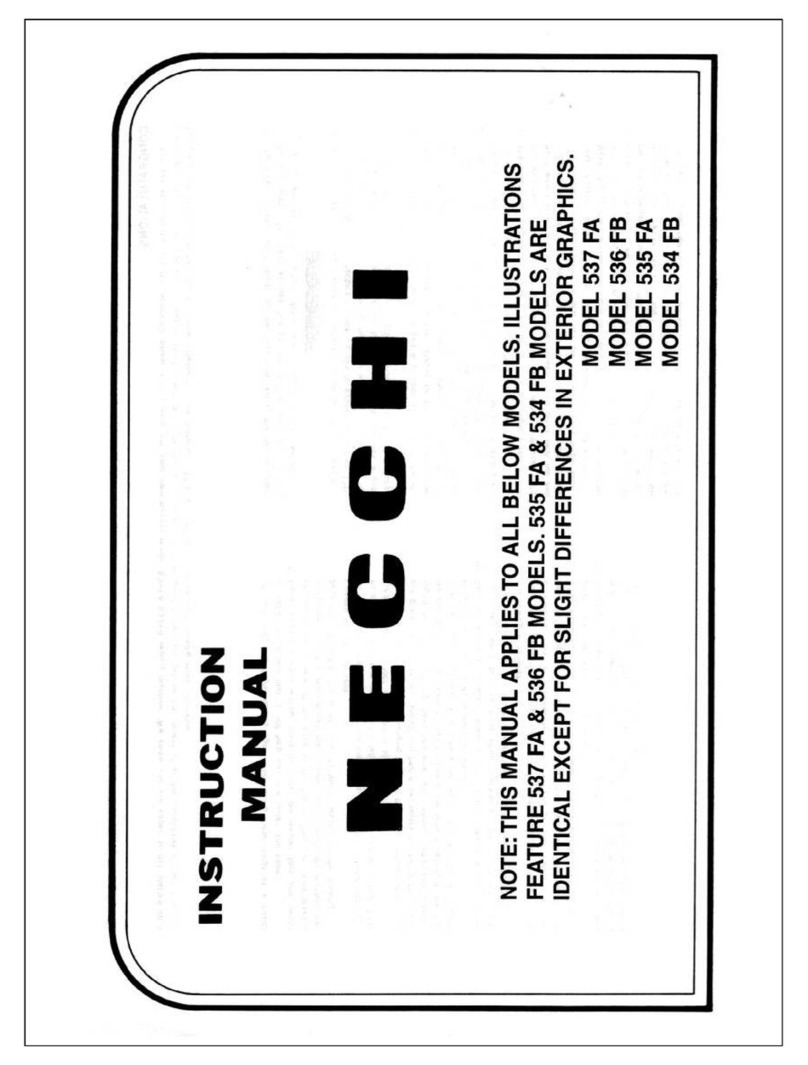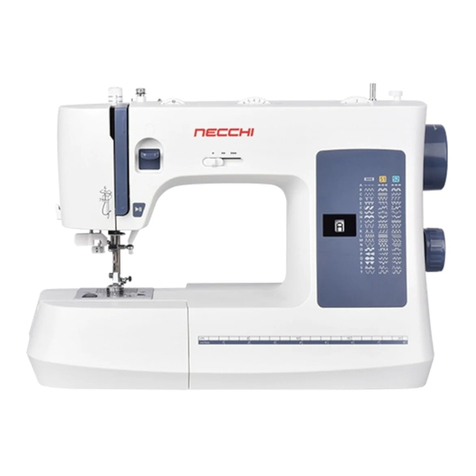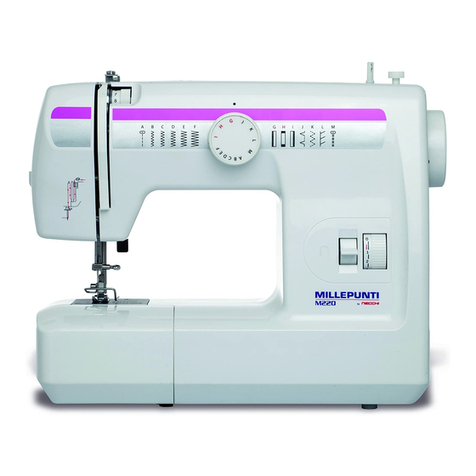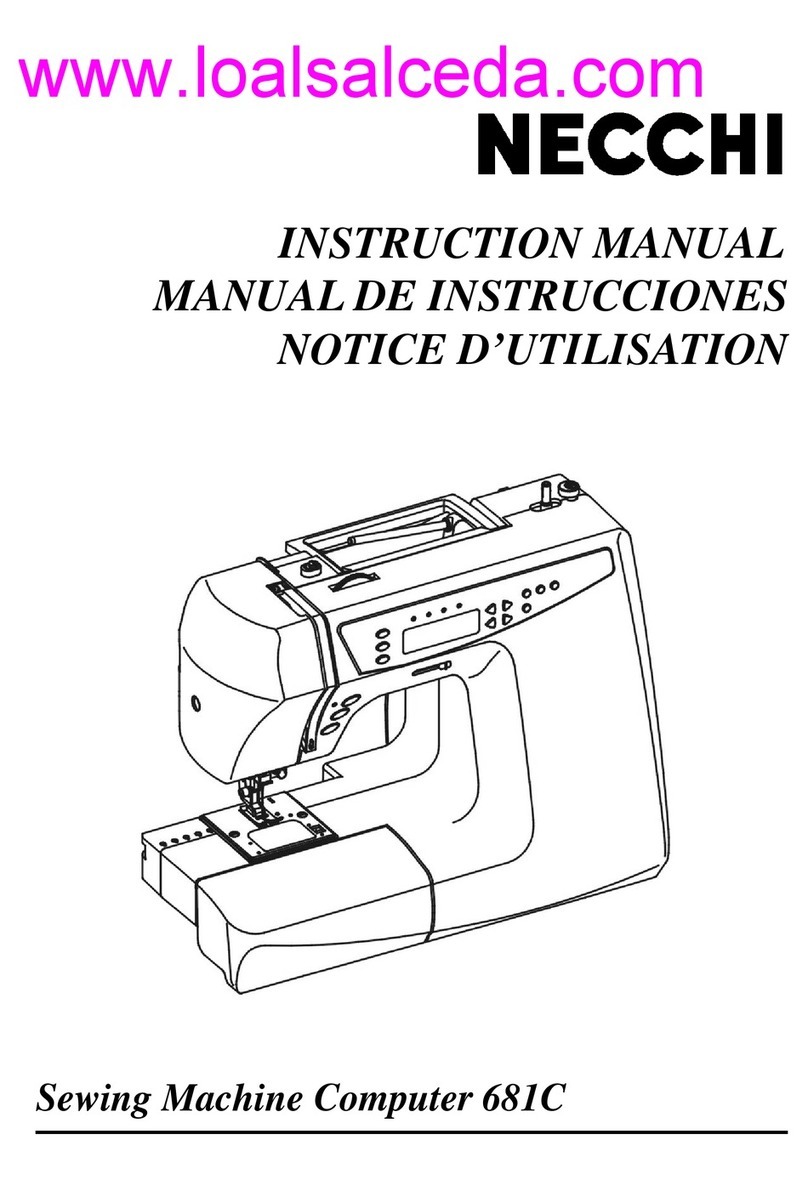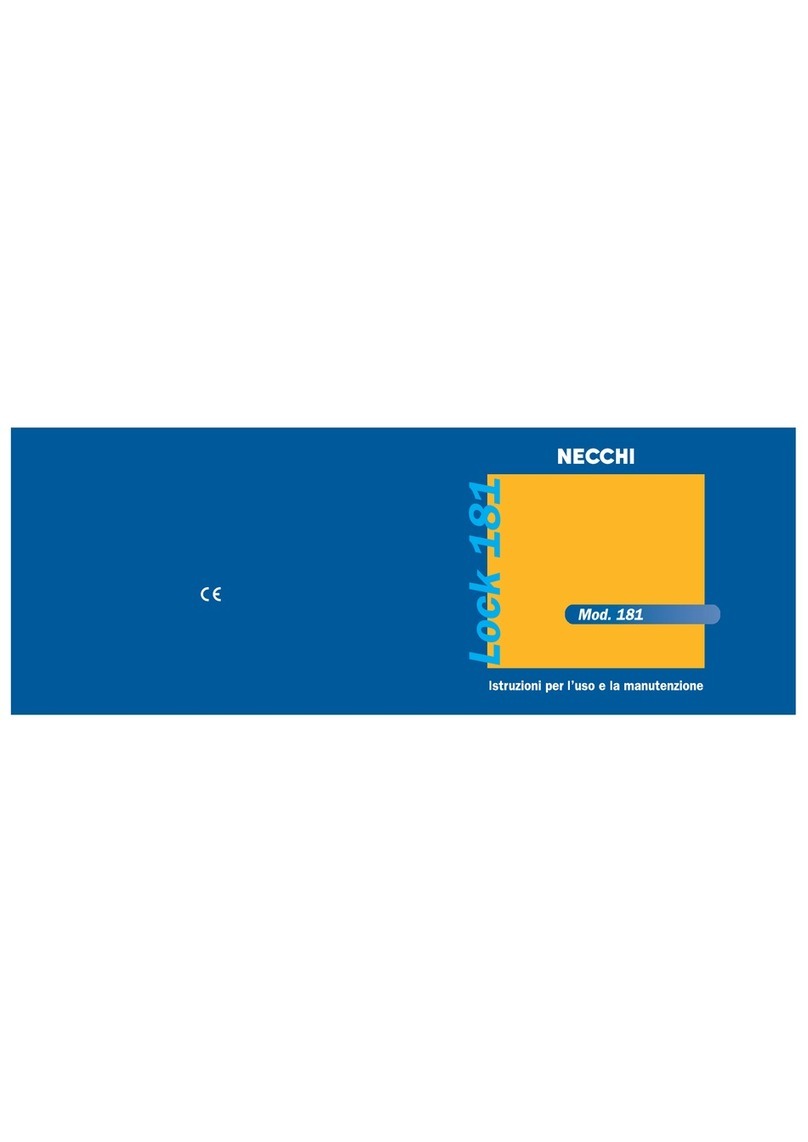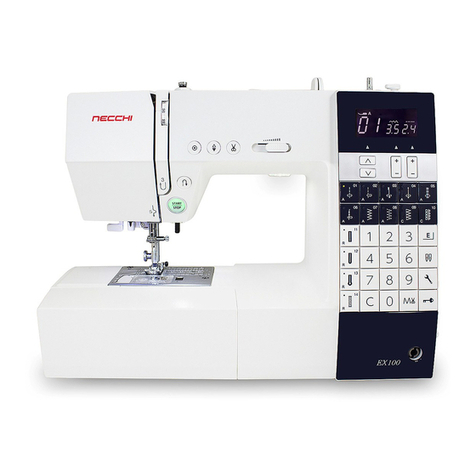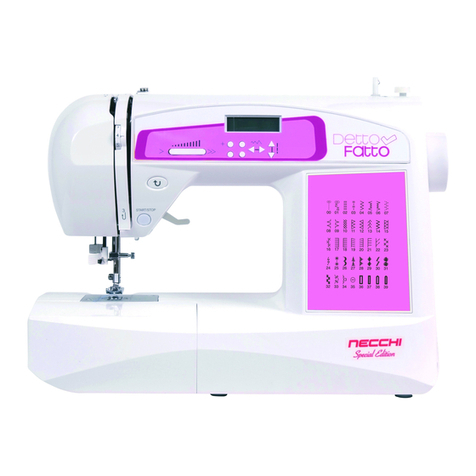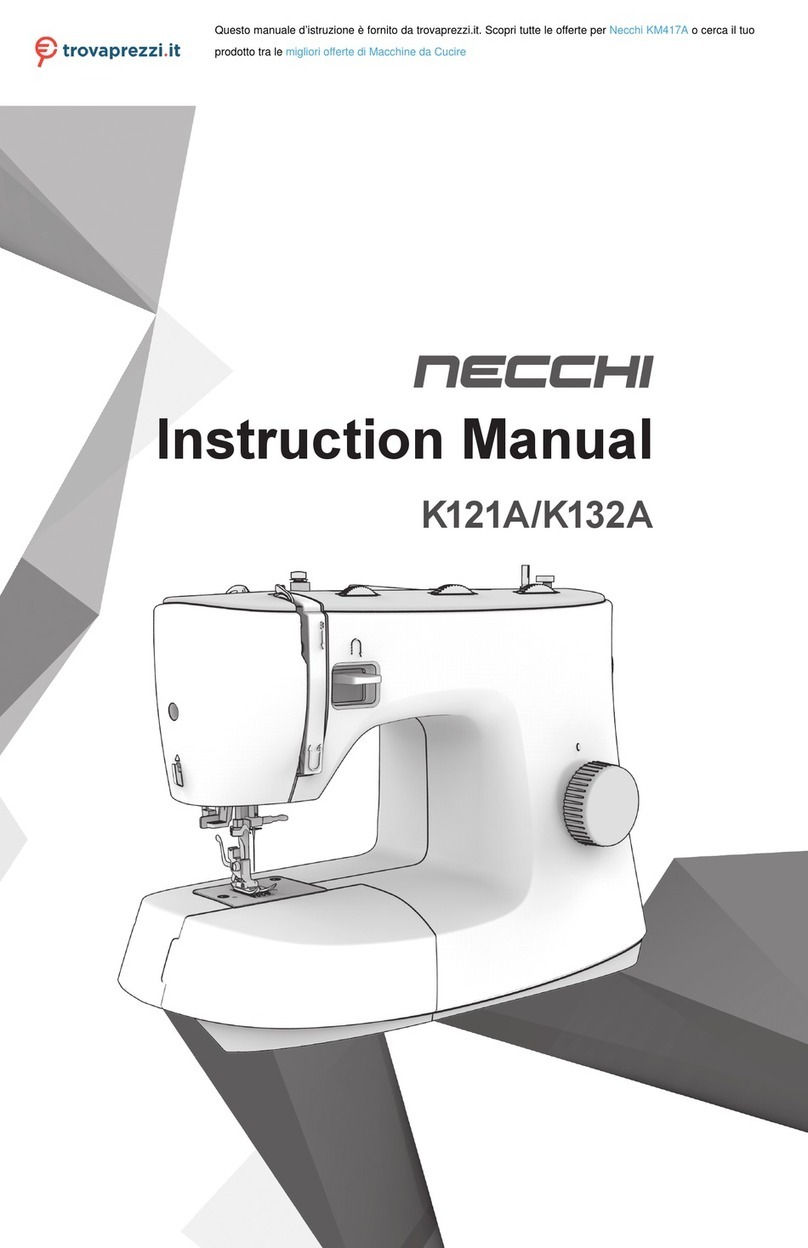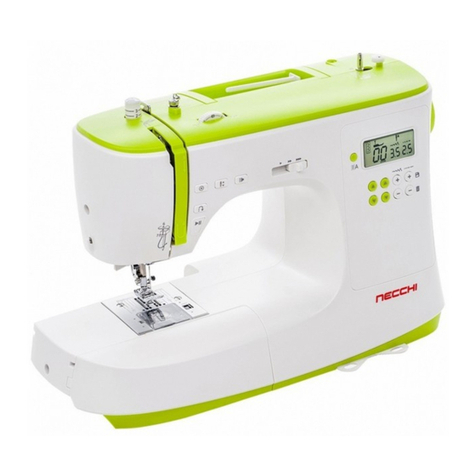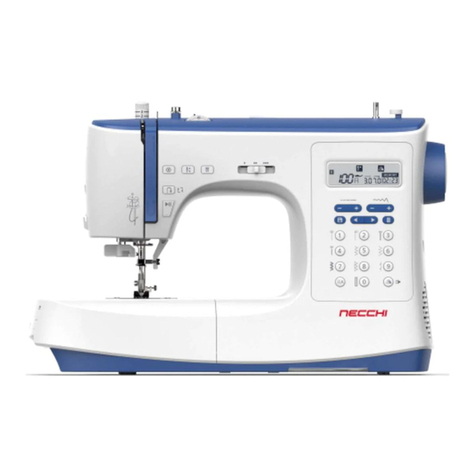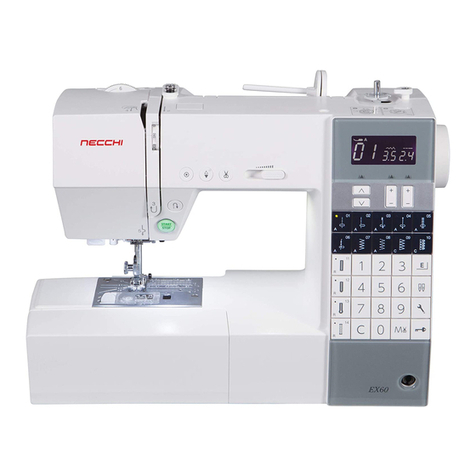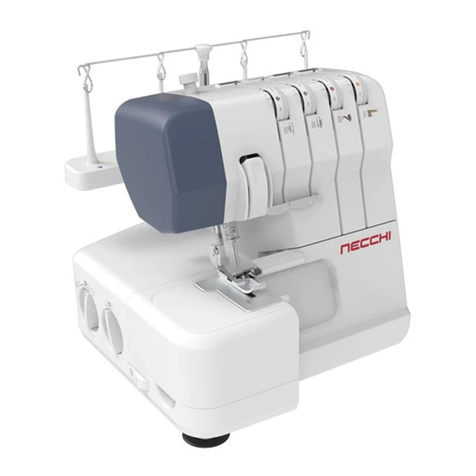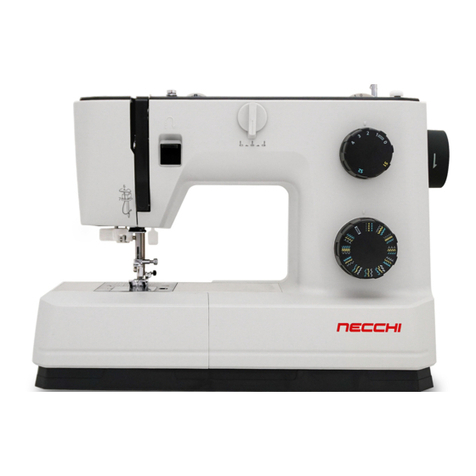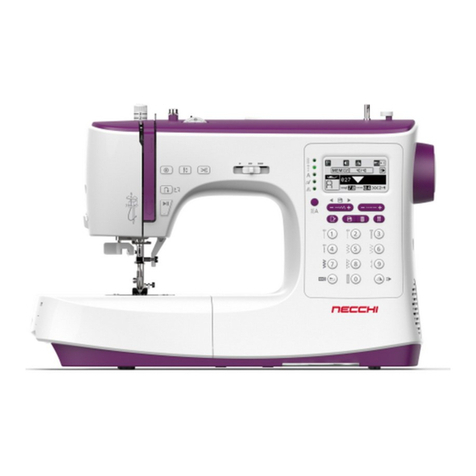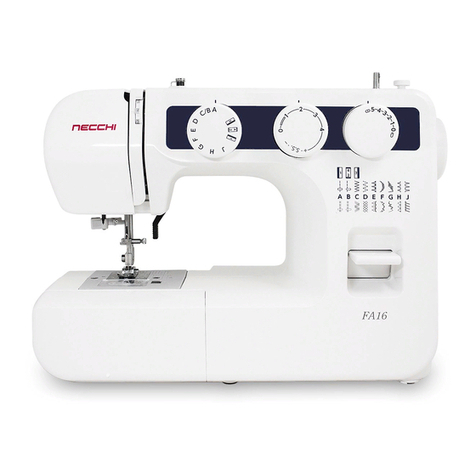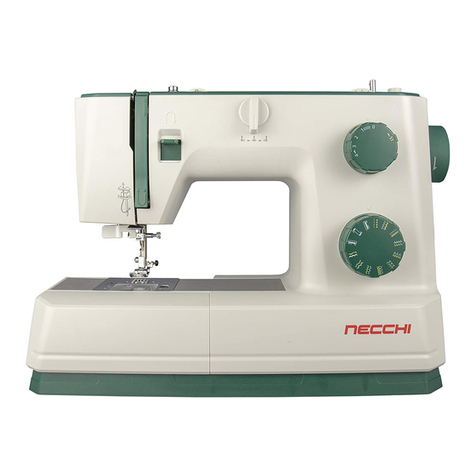
NAMES OF PARTS
Names of Parts ........................................................... 1
Standard Accessories ................................................. 2
GETTING READY TO SEW
Connecting the Power Supply..................................... 3
Using the start/stop button .......................................... 4
Controlling Sewing Speed........................................... 4
Speed control slider .................................................... 4
Foot control ................................................................. 4
Extension Table........................................................... 5
Detaching the table ..................................................... 5
Attaching the table ...................................................... 5
Free-arm sewing......................................................... 5
Accessory storage ...................................................... 5
Machine Operating Buttons ........................................ 6
Function Buttons & LCD Display ................................ 7
Presser Foot Lifter ...................................................... 8
Changing the Presser Foot......................................... 8
Removing and Attaching the Foot Holder................... 8
Presser Foot Pressure Dial ........................................ 8
Adjusting the Needle Thread Tension......................... 9
Straight stitch .............................................................. 9
Zigzag Stitch ............................................................. 10
Dropping or Raising the Feed Dog ............................11
Changing the Needle ................................................ 12
Selecting Thread and Needles ................................. 12
Setting the Spool of Thread ...................................... 13
Horizontal spool pin .................................................. 13
Extra spool pin .......................................................... 13
Bobbin Winding......................................................... 13
Winding the bobbin ................................................... 14
Inserting the bobbin .................................................. 15
Threading the Machine ............................................. 16
Needle Threader ....................................................... 17
Drawing up the Bobbin Thread................................. 18
BASIC SEWING
Straight Stitch Sewing............................................... 19
Sewing from the edge of thick fabric ........................ 19
Changing sewing direction ....................................... 20
Securing seam.......................................................... 20
Auto Thread Cutting.................................................. 20
Using Seam Guides.................................................. 21
Turning a square corner ........................................... 21
Altering the needle drop position .............................. 22
Altering the stitch length ........................................... 22
Straight stitch ............................................................ 23
Lock-a-matic stitch.................................................... 23
Locking stitch ............................................................ 23
Triple stretch stitch.................................................... 24
Stretch stitch ............................................................. 24
Saddle stitch ............................................................. 24
Zigzag Stitches ......................................................... 25
Altering the stitch width ............................................. 25
Altering the stitch length............................................ 25
Overcasting with zigzag stitch................................... 25
Multiple zigzag stitch ................................................. 26
Overedge stitch ......................................................... 26
Double overedge stitch ............................................. 26
Buttonholes ............................................................... 27
Square buttonhole..................................................... 27
Double layer buttonhole ............................................ 29
Using the stabilizer plate ........................................... 30
Adjusting the width and density for buttonholes........ 31
Round-end buttonhole............................................... 31
Keyhole buttonhole ................................................... 31
Corded buttonhole..................................................... 32
Tacking ...................................................................... 33
Eyelet ........................................................................ 34
Zipper Sewing ........................................................... 35
Attaching the zipper foot ........................................... 35
Fabric preparation ..................................................... 35
Start sewing .............................................................. 36
Blind Hemming.......................................................... 38
Adjusting the needle drop position ............................ 38
Button Sewing ........................................................... 39
Gathering .................................................................. 39
DECORATIVE STITCHING
Patchwork Piecing..................................................... 40
Patchwork ................................................................. 40
Shelltuck Tuck ........................................................... 41
Applique .................................................................... 41
Fringing ..................................................................... 42
Cross Stitch............................................................... 42
Fagoting .................................................................... 43
Scallop Stitch ............................................................ 43
Smocking .................................................................. 44
Pintucking.................................................................. 44
Satin Stitches ............................................................ 45
Decorative Stretch Stitches....................................... 45
Twin Needle Sewing.................................................. 46
Threading the machine for twin needle ..................... 46
Selecting the patterns ............................................... 47
Sewing ...................................................................... 47
MACHINE SETTINGS
Machine Setting Mode .............................................. 48
Buzzer sound setting................................................. 48
Needle stop position setting ...................................... 48
Correcting Deformed Stitch Patterns ........................ 48
CARE OF YOUR MACHINE
Cleaning the Hook Race and Feed Dog ................... 49
Installing the Bobbin Holder ...................................... 49
Problems and Warning Signs.................................... 50
Troubleshooting ........................................................ 51
TABLE OF CONTENTS
